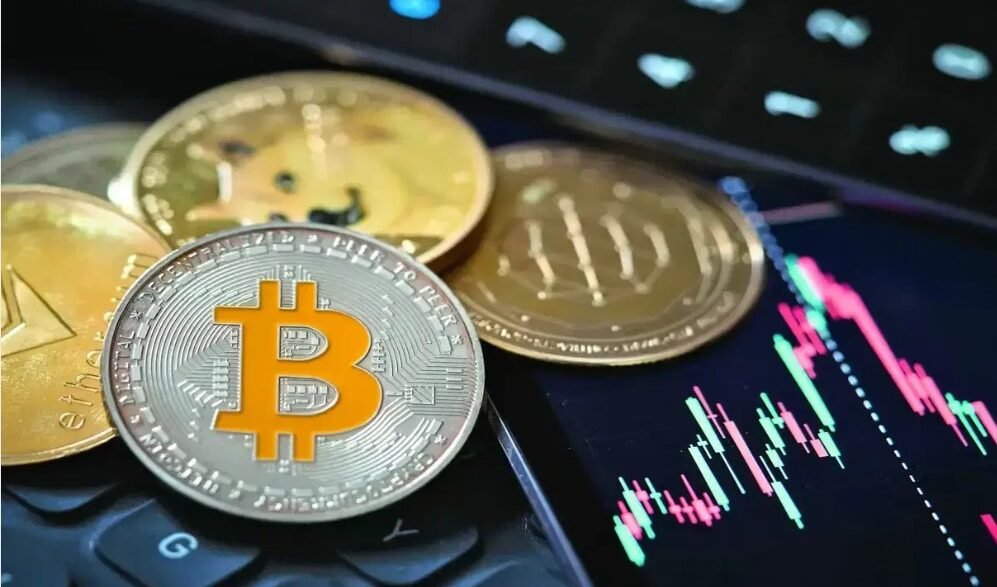In a dramatic leap that has electrified markets and captured global attention, Bitcoin has surged past the $125,000 mark for the first time, establishing a new record high and signaling a powerful phase in its ongoing bull run.
The cryptocurrency traded at approximately $125,245.57 in early trading — a roughly 2.7% increase — pushing well beyond its prior peak of around $124,480 set in mid-August. Some exchanges even reported a momentary high of $125,689 during Asian trading hours.
What’s Fueling the Surge?
1. ETF Inflows & Institutional Demand
One of the clearest catalysts behind Bitcoin’s price leap has been continued inflows into Bitcoin-backed exchange-traded funds (ETFs). These instruments have made it easier for large institutional investors, funds, and wealth managers to gain exposure to the crypto space — and many have responded aggressively.
By absorbing supply on the market side, these ETF flows have helped apply upward pressure on price — especially in a market environment where demand is rising.
2. Macro and Dollar Pressure
Bitcoin’s rise comes amid weakness in the U.S. dollar, which has seen multi-week declines against other major currencies. For investors concerned about currency debasement, inflation, or fiscal instability, Bitcoin is increasingly seen as an alternative or hedge. Some analysts call this the “debasement trade” — a movement toward assets that may preserve value better than fiat under certain stress scenarios.
Also contributing: the broader rally in risk assets. Strong performances in U.S. equities have offered a favorable backdrop, effectively giving crypto more leverage to ride positive sentiment in capital markets.
3. U.S. Government Shutdown & Political Uncertainty
In Washington, a looming government shutdown has raised concerns over fiscal stability, economic forecasts, and political gridlock. The uncertainty has nudged some investors toward alternative assets, including Bitcoin.
In this climate, the narrative of Bitcoin as a safe-haven — or at least as a diversifier — gains more traction. That said, whether it can sustain that role in volatile or crisis periods remains contested.
4. Pro-Crypto Regulatory Signals
Another structural tailwind is the shifting regulatory and political climate in the United States. Under the current administration, there has been a more favorable posture toward cryptocurrencies compared to previous regulatory ambiguity. Legislative and policy movements toward clearer frameworks, stablecoin oversight, and crypto-friendly statutes are viewed by many in the market as legitimizing forces.
This change has encouraged more institutional capital to flow into digital assets, especially when paired with infrastructure (custody, compliance, etc.) that supports large-scale investment.
Historical Context: A Milestone in Bitcoin’s Journey
Bitcoin has never been a stagnant asset. Its price history is dotted with dramatic rises and steep corrections, but few milestones have registered as broadly as the $125,000 breakthrough.
- In August 2025, it set a previous all-time high at around $124,000.
- Earlier in its history, Bitcoin has repeatedly defied skeptics, busting through psychological barriers like $10,000, $20,000, $50,000, $100,000, and more.
- This latest high places Bitcoin’s market capitalisation in rare air — at times, overtaking major global companies in value.
In a way, the $125,000 milestone feels like both a culmination and a pivot point — a new base from which narratives about Bitcoin’s role in financial markets will be tested more fiercely than ever.
Risks, Overextensions & What Could Go Wrong
While the headlines today all favor the bulls, market watchers must remain alert to downside risks and countervailing pressures.
- Volatility & Corrections
Bitcoin’s history is littered with steep pullbacks. After a rapid ascent, market fatigue, profit-taking, or sentiment shifts can produce sharp reversals. - Regulatory Backlash
Even in a benign regulatory climate, there’s always a possibility that governments will intervene — through taxation, tighter oversight, or outright bans in certain jurisdictions — which could upend momentum. - Monetary Policy Surprises
If central banks, especially the U.S. Federal Reserve, shift policy unexpectedly (hawkish rate hikes, tapering asset purchases, etc.), risk assets — including crypto — often feel the brunt. - Liquidity & Market Structure Risk
Large inflows into ETFs or concentrated holdings by large investors can make Bitcoin sensitive to sudden liquidity drains or sell-offs. If too many players decide to exit at once, cascading effects are possible. - Macro Disappointments
Missing jobs numbers, geopolitical shocks, or worsening economic data could shatter risk sentiment generally, and crypto might not be immune.
What This Means for Investors & Markets
For Retail & Crypto Traders
- Momentum Strategies: Some traders will view the breakout as confirmation of strength and chase further gains.
- Caution on Leverage: Given Bitcoin’s known swings, using high leverage in such an environment can be dangerous.
- Stops & Risk Controls: Setting smart exit levels or hedges becomes more essential.
For Institutions & Big Players
- Allocation Strategy: The structural narrative is now more compelling for diversified portfolios — many may increase allocations to crypto or digital asset strategies.
- Infrastructure Expansion: Custody providers, clearing houses, and institutional-grade crypto services will be under demand pressure.
- Corporate Adoption: More companies might consider Bitcoin or crypto exposure on balance sheets or as part of treasury strategy.
For Policy Makers & Regulators
- Heightened Scrutiny: With Bitcoin crossing new thresholds, regulators will likely intensify their focus on market integrity, fraud prevention, consumer protection, and systemic risks.
- Standard-Setting Moments: Legislatures may feel more urgency to establish comprehensive frameworks around stablecoins, exchanges, taxation, AML/KYC rules, and crypto banking.
Looking Ahead: What’s Next for Bitcoin?
Technical Trajectory
If the momentum holds, many analysts see $135,000 to $150,000 as plausible next targets, especially if Bitcoin can sustain support above key levels like $120,000. But such projections always carry caveats — the risk of overextension is real.
Market Sentiment & Psychology
Breaking significant psychological barriers can reshape market psychology. The move above $125,000 may embolden believers, intensify FOMO (fear of missing out), and attract a new wave of entrants. But it will also test the conviction of skeptics and short-term holders.
Macro Cycle & Monetary Policy
Much depends on macro stability. If central banks pivot toward easing later in the year, risk assets could benefit. Conversely, if tightening resumes, the rally could face headwinds.
Regulatory Clarity as a Catalyst
One of the wildcards: how regulators—especially in the U.S., EU, China, and major financial markets—respond. Clear, balanced regulation could unlock far more capital into crypto; harsh or restrictive policies could spook investors.
Final Thoughts
Bitcoin’s breakthrough past $125,000 is more than just a milestone — it’s a statement. It reflects the confluence of institutional capital, macro pressures, regulatory recalibration, and shifting investor psychology.
Yet with great heights come great challenges. Holding the gains ahead will demand resilience, structural support, and prudent risk management. Whether this moment marks the start of a sustained parabolic ascent — or a plateau before a correction — is a story that will unfold in the weeks and months ahead.
For now, Bitcoin sits atop a new throne. The question is: how high can it reach from here — and can it stay there?














